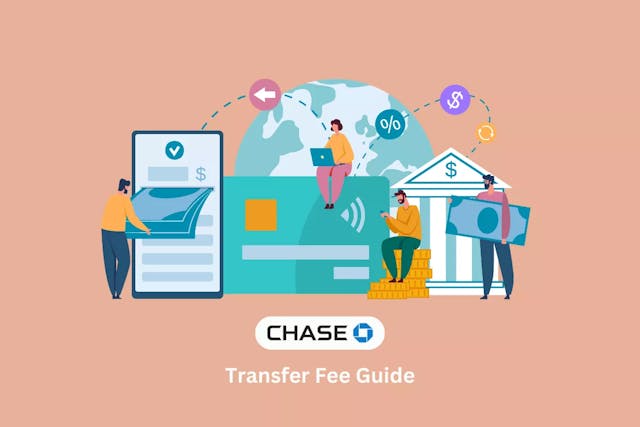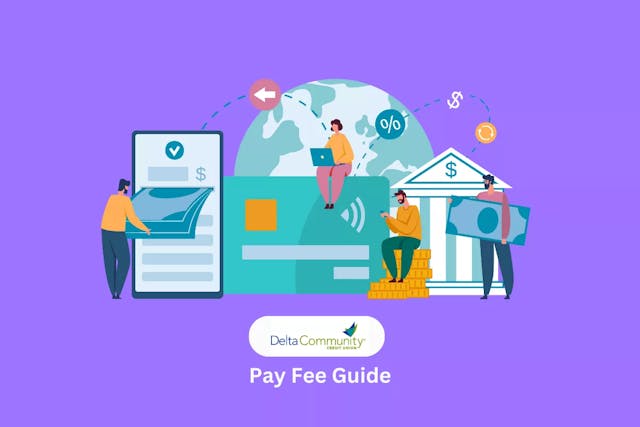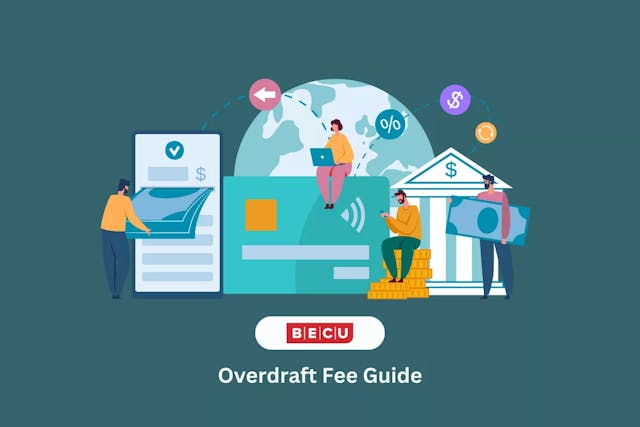What Is a Monthly Service Fee?
Financial institutions may charge account holders a monthly service fee, sometimes called a monthly service charge or maintenance fee, for having certain checking accounts or savings accounts. Banks charge these fees to cover any overhead or perks associated with the account, including overdraft coverage, ATM usage, and more.
Several Chase checking accounts come with monthly service fees, but the bank will also waive the fee if you meet certain requirements for that account on a monthly basis. Examples of requirements that allow you to qualify for a fee waiver include:
- Maintaining a minimum balance in the account, or in qualifying linked Chase checking accounts
- Setting up automatic payments to be made from your Chase checking account
- Making a certain amount of electronic deposits
- Being a student, or active or former military personnel
How Much Does a Monthly Service Fee Cost at Chase Bank?
The cost of monthly service fees vary among Chase checking accounts and savings accounts. Your account agreement outlines the minimum requirement(s) you must meet to avoid a fee.
Chase Secure Checking
Chase Bank charges a $4.95 monthly fee on Chase Secure Checking accounts. According to Chase’s fee schedule, there are no minimum requirements that you can meet to avoid the fee.
Chase Total Checking
Chase Bank charges a $12 monthly fee on Chase Total Checking accounts. You can avoid the fee on your Chase Total Checking account if any one of the following requirements are met:
- Electronic payments made to your Chase Total Checking account totaling at least $500
- Balance in the account at the start of each day of at least $1,500
- Average beginning day balance of at least $5,000 in this account and any qualifying linked deposits/investments
Chase Premier Plus Checking
Chase Bank charges a $25 monthly fee on Chase Premier Plus Checking accounts. You can avoid the fee if any one of the following requirements are met:
- Average beginning day balance of at least $15,000 in this account and any qualifying linked deposits/investments
- Linked qualifying Chase first mortgage enrolled in automatic payments from your Chase Premier Plus Checking account
Chase Sapphire Checking
Chase Bank charges a $25 monthly fee on Chase Sapphire Checking accounts. You can avoid the fee if:
- Average beginning day balance of at least $75,000 in this account and any qualifying linked deposits/investments
Chase Private Client Checking
Chase Bank charges a $35 monthly fee on Chase Private Client Checking accounts. You can avoid the fee if any one of the following requirements are met:
- Average beginning day balance of at least $150,000 in this account and any qualifying linked deposits/investments
- Linked Chase Platinum Business Checking account
Chase College Checking
Chase Bank charges a $6 monthly fee on Chase College Checking accounts. You can avoid the fee if any one of the following requirements are met:
- Up to 5 years in college
- An electronic deposit made into the account
- Average balance at the end of each day of at least $5,000
Chase Savings Account
Chase Bank charges a $5 monthly fee on Chase Savings accounts. You can avoid the fee on your savings account if any one of the following requirements are met:
- Balance at the end of each day of at least $300 in your savings account
- At least $25 in autosave or other repeating automatic transfers from personal Chase checking account
- Linked Chase College Checking for overdraft protection
- Savings account owner younger than 18
- Linked Chase Better Banking Checking, Chase Premier Checking, Chase Premier Plus Checking, Chase Sapphire Checking, or Chase Private Client Checking account
Chase Premier Savings
Chase Bank charges a $25 monthly fee on Chase Premier Savings accounts. You can avoid the fee if any one of the following requirements are met:
- Balance at the beginning of each day of at least $15,000
- Linked Chase Premier Plus Checking or Chase Sapphire Checking account
Special Considerations
Chase does not charge monthly service fees for the following accounts:
- Chase First Checking
- Chase High School Checking
- Chase Private Client Savings
How to Avoid a Monthly Service Fee
Keep a close eye on your account balance
If you maintain a minimum balance on many Chase accounts, the bank will automatically trigger a fee waiver for you. Maintaining the minimum balance may be the difficult part, but if you keep a close eye on your account balance and transfer funds to ensure that you stay above that threshold, you’ll have a better chance of meeting the minimum requirement.
Set up direct deposit
Another way to ensure that you’re keeping a steady balance in your account is by setting up direct deposits to automatically funnel your paycheck or automatic transfers into your account. By setting up direct deposits of your paychecks, you won’t have to remember to transfer money manually.
Choose the right account
Some Chase accounts may be easier for you to meet a minimum requirement than others. For instance, if you are a student, consider opening a Chase College Checking account where you can automatically get the fee waived, rather than another account that may require you to keep a minimum balance or automatically deposit a certain amount of money.
If you struggle with maintaining your account minimums, consider opening a fee-free checking account with Chase or another bank to avoid the monthly charge. Depending on the type of bank account you have with Chase, making the switch to a fee-free account can save you hundreds each year.
How to Get a Monthly Service Fee Refund
If you are unable to meet the requirements to avoid a monthly service fee and get stuck with a charge anyway, you may be able to get the fee waived.
Unfortunately, financial institutions may be more willing to waive overdraft fees or ATM fees than monthly service fees. Some account fees, such as monthly service fees or credit card annual fees, are baked into the deal when you sign your contract, whereas ATM fees are an added penalty. Whenever you receive ATM fees, it’s usually due to an oversight or emergency on your end, which can be used to your advantage when you’re negotiating. Regardless, there are still steps that you can follow to increase your chances of getting a refund.
Prepare thoroughly
When you call Chase customer service, you will likely need to provide your name, bank account number, and the fees that you’d like refunded.
You can begin with: “Hi. My name is . I recently received a monthly service fee on my Chase checking account. I’m calling to see if you would be willing to refund it for me.”
Present your points of leverage
This is when you can really let your skills in preparation shine. Let the customer service representative know why you’re requesting a refund. Have you been financially impacted by COVID-19? Do you typically meet one or more of the minimum requirements to qualify for the fee waiver, but this month was just a slip up? The more points of leverage that you have at your disposal, the better your negotiation will go.
Be patient, persistent, and prepared not to get a refund
Remember: The representative likely didn’t write the rules, so try to avoid getting too angry or emotional when you’re having the conversation. Kindness is key. If you’re kind to the representative, you’ll more likely have a productive conversation and may even have more success convincing them to see things from your point of view.
While still being kind and patient, you can also be persistent. If you’re not having success with the representative, politely ask to speak with higher level management or a supervisor at the branch. Occasionally, the representative on the phone might not have the authority to grant you a refund, but someone higher up in the company can. You can also try calling back at a later date to speak with a different representative. Now that you’ve had more practice and seen how the conversation will go, you might have more success this time around.
Finally, remember that not every negotiation will end with a refund. In fact, you might only get a partial refund or no refund at all. That’s okay. Try not to get discouraged. Instead, focus on what you can do to meet the criteria to qualify for a monthly fee waiver in the future.
Find Chase Bank’s full fee schedule here.



